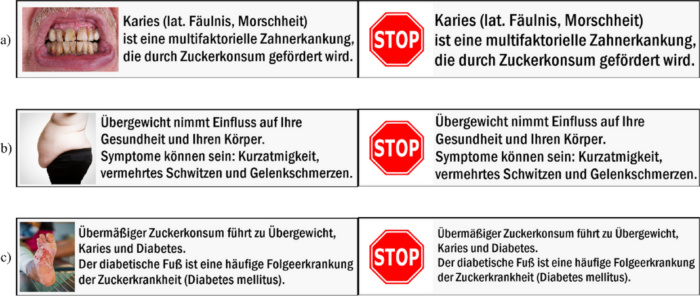Explore two straightforward strategies in the battle against excessive sugar intake: taxes on sugary products and the use of graphic labels. We’re presenting two recent studies armed with real numbers, breaking down how these approaches could impact our sugar consumption. No frills, just the facts—join us as we navigate the practical side of policy, health, and changing habits.
When Taxation Is Good… For Your Health
The first study that we want to point out delves into the impact of sugar-sweetened beverage taxes in five U.S. cities, namely Boulder, Philadelphia, Oakland, Seattle, and San Francisco. These taxes resulted in an average 33.1% increase in retail prices of sugar-sweetened beverages over two years, equating to a significant 1.3¢ per ounce rise. Impressively, distributors passed on 92% of the tax to consumers.
What’s striking is the immediate and sustained effect on consumer behavior. Following tax implementation, there was a substantial 33.0% reduction in sugar-sweetened beverage purchases, revealing a −1.00 price elasticity of demand. This suggests that consumers are responsive to price changes, making healthier choices when faced with increased costs for sugary beverages.
Furthermore, the study dismisses concerns about consumers seeking alternatives in neighboring areas without sugar-sweetened beverage taxes, finding no evidence of increased cross-border purchases. This strengthens the case for the effectiveness of sugar-sweetened beverage taxes as a localized strategy.
In summary, the study underscores the potential public health benefits of scaling such taxes nationally. It not only demonstrates a successful reduction in sugar-sweetened beverage consumption but also emphasizes the economic feasibility of implementing such measures. This information encourages individuals and policymakers to consider and support sugar-sweetened beverage taxes as a means of promoting healthier beverage choices and, consequently, improving overall public health.
Unveiling the Impact of Scare Tactics on Sweet Treat Temptations
A recent study published in BMC Public Health explored the impact of health warning messages on sweets and their influence on consumer behavior. The study found that different types of health warning messages affected the purchase probability of sweets, with messages emphasizing immediate health consequences (like cavities) being more effective than those emphasizing distant health consequences (as diabetes or obesity).
As of the writing of the study, five countries (Chile, Israel, Mexico, Peru, and Uruguay) had introduced or were in the process of introducing nutrition warnings/labels, similar to those found on cigarette packs. Employing identical labels, translated into German, researchers conducted an online survey in Germany, collecting responses from a sample of over a thousand participants aged eighteen and above, which was approximately representative of the entire German population.

Participants were asked to express their perceptions of various warnings related to short-term health issues, such as tooth decay, and more enduring consequences like obesity and type 2 diabetes. The findings revealed that warnings concerning short-term health problems garnered greater attention. Dr. Clara Mehlhose, the first author of the study and affiliated with Göttingen University’s Marketing for Food and Agricultural Products group, suggests that this preference could be attributed to the more immediate nature of the associated consequences.
Overall, the study found that health warning messages had a significant impact on the purchase probability of sweets, suggesting that these messages can influence consumer choices and potentially reduce the consumption of unhealthy food products. The study also revealed interactions of the warning effects with age, as well as interactions of specific factors with the warnings, indicating that the effectiveness of the messages varied depending on the age of the consumer and the specificity of the message.
By paying attention to health warning messages and considering the short- and long-term health consequences of their food choices, consumers can make more informed decisions and enjoy better overall health. This should provide valuable insights for policymakers and public health professionals working to improve public health through health communication strategies and interventions.






